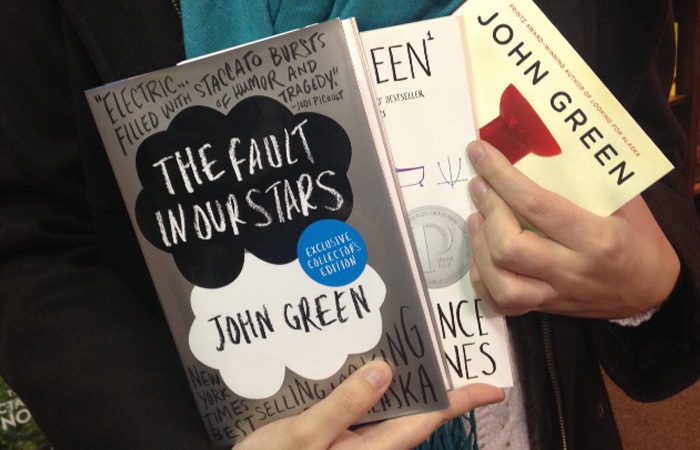Maybe John Green Is Today’s Judy Blume After All

John Green loves Judy Blume. In fact, in this video from 2007, he tells his brother she’s on his celebrity crush list. So we can only imagine how he must have felt when the Hollywood Reporter said The Fault in Our Stars, the movie adaptation of his insanely popular novel, “puts Green in the position to accomplish something his idol Blume never achieved: crossover from publishing to Hollywood, signifying the shift to true-life stories in YA.” The YA blogging community took issue with that, particularly since Blume purposely didn’t sell her books to Hollywood, until she made Tiger Eyes with her son last year. In a recent interview, he said that comparison “is ridiculous. Blume has achieved a lot that I haven’t.”
Well, we wouldn’t exactly agree on the ridiculous front. Long before that story was printed, we’d begun mapping out this series on identifying today’s Judy Blumes—that’s plural due to the fact that it takes many writers to fill her shoes. We always planned on including Green in this list, so let’s hop aboard that bandwagon now. Rest assured, we are not throwing this title around without serious thought.
Green’s novels, not just The Fault in Our Stars, but also Looking for Alaska, Paper Towns and the rest of his works, remind us most of Blume’s Deenie. The protagonist of 1973 middle grade novel suffers from scoliosis, not terminal cancer like TFIOS‘s Hazel, and she’s mildly popular, unlike the outcast boys of Alaska and Paper Towns. Deenie’s mother is singularly focused on her younger daughter’s beauty and her inevitable career as a model. But Deenie herself isn’t so sure—at 13, she’s more interested in making the cheerleading squad or talking to boys, and she’s sometimes jealous of the options available to her plainer, and brainier, older sister. Suddenly her condition—and the massive back brace she’ll have to wear for years—places her on the outside, forcing her to reevaluate the world around her, as well as how she sees herself.
Yes, many of us will forever remember Deenie as the book that features masturbation. And sure, that’s a very important element of the story—not just for making girls feel it’s OK, but because it’s part of Deenie’s growth into a multidimensional person. As her parents argue over what’s best for their daughter, she’s turning inward and discovering what makes her happy, whether it’s her “special place,” making friends with the girl she previously shunned for having eczema, or making out with her crush Buddy Brader while wearing her imposing brace.
TFIOS fans will see a perfect parallel between Deenie’s brace makeout scene and a certain awkward wonderful moment between Hazel, her oxygen machine, Gus, and his false leg. Of course, the comparisons between Green’s work and Blume’s goes deeper. In Looking for Alaska, Miles “Pudge” Halter is on a quest to redefine himself at boarding school, where parental ideals can’t touch him. Paper Towns‘ beautiful Margo wants to break free of her ordinary, popular teen existence forever. The two Will Graysons in Will Grayson, Will Grayson (the book Green cowrote with David Levithan), have got a whole mess of identity issues to deal with, starting with that shared name of theirs. Colin in An Abundance of Katherines has to decide who he is besides a “child prodigy” and a guy who’s been dumped by 19 girls named Katherine. And Hazel and Gus? They’re making their tragically short lives count as something more than tragically short lives—at least, they find, to the people who love them.
It’s the grand story of adolescence: finding out and then telling other people who you really are. But there are few writers who can do it with the same delicate touch of Blume and Green. That’s why we’re declaring him one of today’s Judy Blumes, whether he likes it or not!
Read why we bestowed the Judy Blume title on Gayle Forman, and then tell us who else you think deserves this honor. We’ll be posting more soon!
Who do you think deserves the title of Today’s Judy Blume?